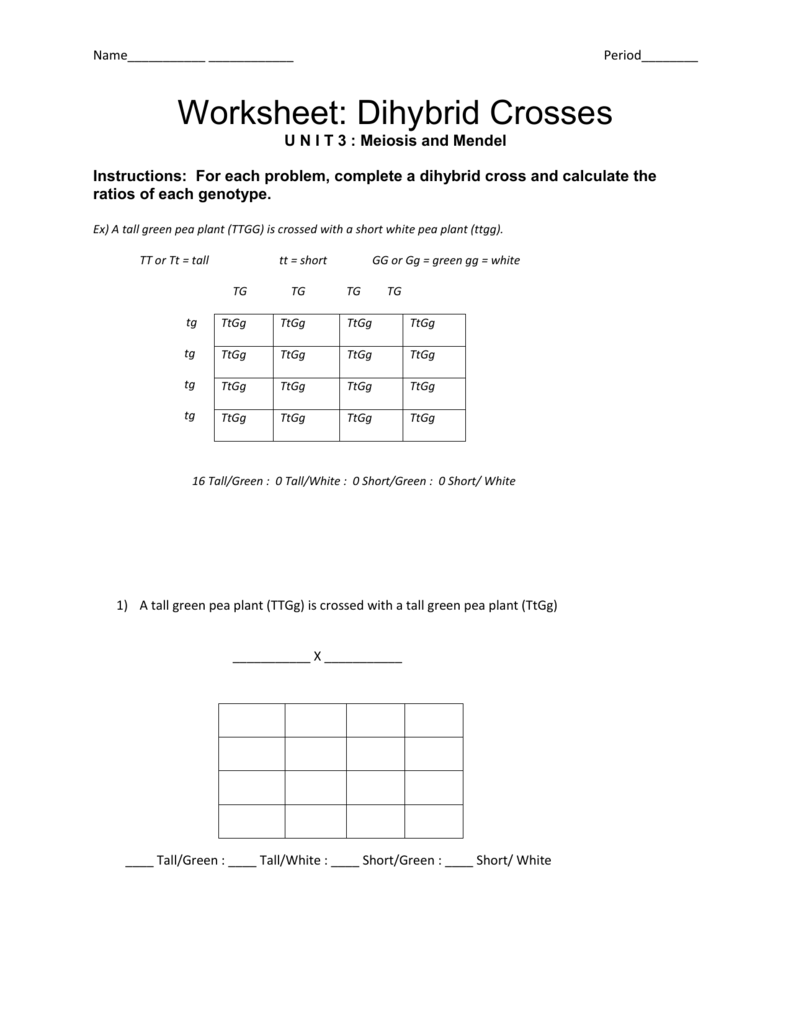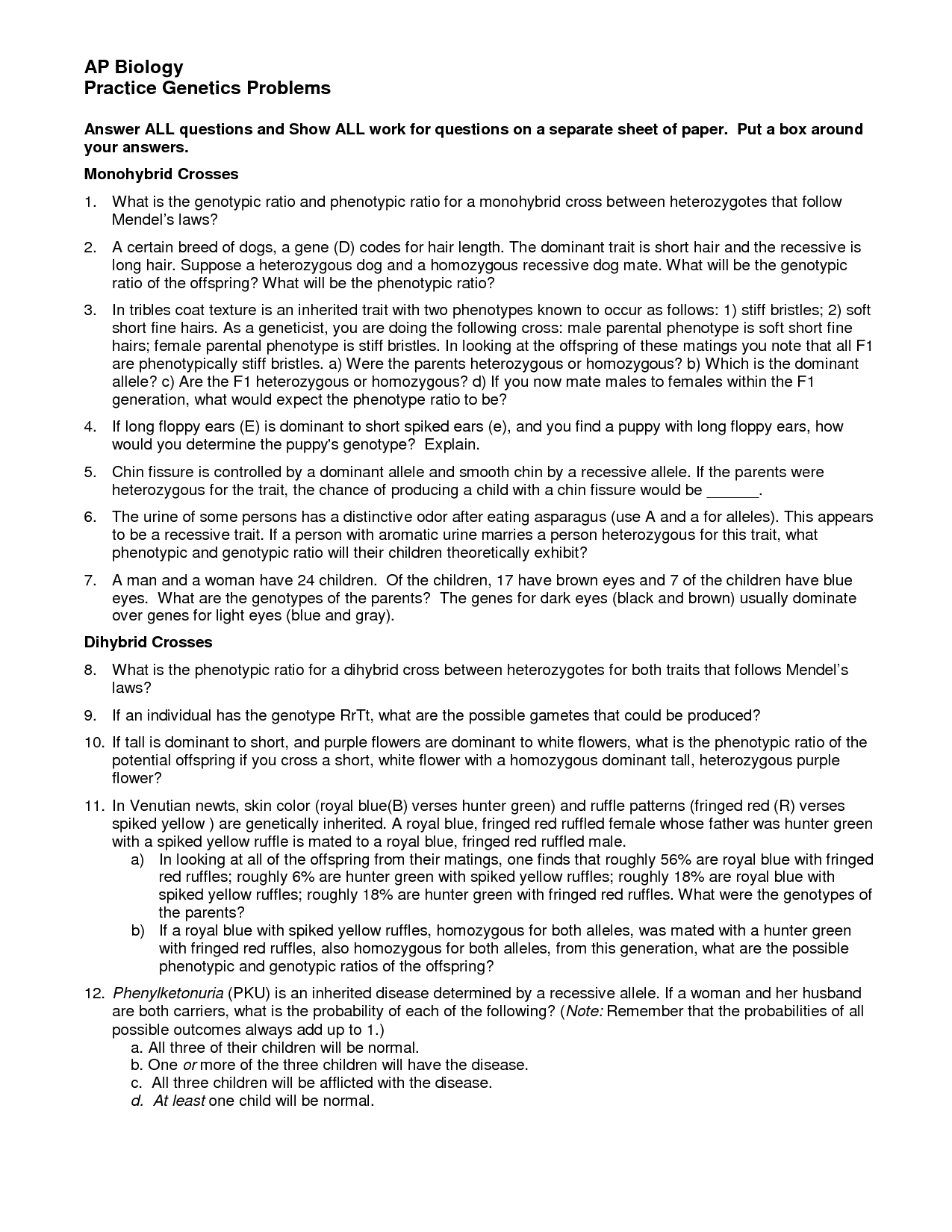Picture this: You’re gazing at a beautiful rose bush, its vibrant pink blossoms a striking contrast against the lush green foliage. You wonder, how did that mesmerizing pink color come to be? What secrets of heredity lie hidden within its DNA? The answer, my friend, lies in the fascinating world of genetics, and specifically, in the concept of monohybrid crosses.

Image: cununguo1.blogspot.com
This profound journey into the heart of inheritance begins with the exploration of monohybrid crosses, a foundational principle in genetics that explains how traits are passed down from one generation to the next. Prepare to embark on an intellectual adventure as we delve into the secrets of monohybrid crosses, unraveling the mysteries of heredity, and empowering you with a deeper understanding of the very blueprint of life.
A Deep Dive into Monohybrid Crosses: Unlocking the Secrets of Heredity
At its core, a monohybrid cross focuses on the inheritance of a single trait, such as flower color or seed shape, by comparing two individuals that differ in that particular trait. It’s a deceptively simple concept, yet it holds the key to understanding the complexities of genetic inheritance. To comprehend the intricacies of monohybrid crosses, we must first delve into the fundamental concepts that underpin this genetic dance. Let’s begin our journey by defining the key players:
Genes and Alleles: The building blocks of heredity, genes reside on chromosomes and act like blueprints for specific traits. Alleles, alternative forms of a gene, hold the key to variations in these traits. For instance, a gene for flower color could have two alleles: one for purple flowers and one for white flowers.
Dominant and Recessive Alleles: In a monohybrid cross, one allele often masks the expression of the other. This dominant allele reigns supreme, while the recessive allele remains hidden unless paired with another recessive allele. Imagine two parents, one with brown eyes (dominant) and one with blue eyes (recessive). Their child could inherit either: a dominant brown eye allele, resulting in brown eyes; or two recessive blue eye alleles, leading to blue eyes.
Genotype and Phenotype: Genotype represents the genetic makeup of an individual, the specific combination of alleles they possess. Phenotype, on the other hand, reflects the actual expressed traits, the outward appearance of an individual based on their genotype. Returning to our rose example, a rose plant with a genotype of “pp” (two recessive alleles) would display a white phenotype, while a rose plant with a genotype of “Pp” (one dominant and one recessive allele) would exhibit a purple phenotype.
Armed with this fundamental knowledge, we are now prepared to tackle the monohybrid cross itself. Let’s consider a classic example: crossing two pea plants, one with purple flowers (PP) and one with white flowers (pp).
The Punnett Square: A Visual Tool for Predicting Inheritance
Here’s where the Punnett Square comes into play, a visual tool that beautifully illustrates the possible combinations of alleles in the offspring. This simple yet elegant diagram allows us to predict the probability of each genotype and phenotype in the next generation.
Let’s create our Punnett square:
| P | P | |
|---|---|---|
| p | Pp | Pp |
| p | Pp | Pp |
The top row represents the alleles from one parent, while the left column represents the alleles from the other parent. Each square within the Punnett Square represents a possible combination of alleles for an offspring.
Analyzing the Punnett Square, we observe that 100% of the offspring in the first generation (F1) would have the genotype “Pp,” resulting in a purple flower phenotype. Because purple is dominant over white, even with one recessive allele, the resulting flowers would be purple.
The F2 Generation: A Tale of Segregation and Independent Assortment
Moving onto the second generation (F2), we now cross two F1 plants (Pp x Pp). Constructing a new Punnett Square, we see a different outcome:
| P | p | |
|---|---|---|
| P | PP | Pp |
| p | Pp | pp |
This Punnett Square reveals a phenotypic ratio of 3:1, indicating that 75% of the F2 offspring will exhibit purple flowers, while 25% will exhibit white flowers. This ratio arises from the segregation of alleles during gamete formation.
The Law of Segregation states that each parent contributes one allele for each trait to their offspring.
Furthermore, the independent assortment of alleles during gamete formation explains why the F2 generation exhibits a mix of purple and white flowers. The Law of Independent Assortment states that the genes for different traits segregate and assort independently of each other during gamete formation.
These laws, established by Gregor Mendel through his meticulous experiments with pea plants, form the bedrock of modern genetics, providing a framework for understanding the inheritance of traits across generations.

Image: www.worksheeto.com
Beyond the Classroom: Monohybrid Crosses in Action
Monohybrid crosses are not merely theoretical exercises confined to textbooks. They play a crucial role in various real-world applications, including:
- Agriculture: Breeders utilize the principles of monohybrid crosses to develop crops with desirable traits, such as increased yield, disease resistance, or improved nutritional content.
- Medicine: Understanding monohybrid crosses helps researchers identify and analyze genetic diseases, potentially leading to more effective treatments and preventative measures.
- Animal Breeding: Breeders carefully select individuals with desired traits to improve livestock, ensuring high-quality meat, milk, or wool production.
Expert Insights: Mastering the Monohybrid Cross
Dr. Emily Carter, a renowned geneticist, offers invaluable advice for mastering the concept of monohybrid crosses:
“Start with the basics. Understand the fundamental concepts of genes, alleles, dominance, and recessiveness. Then, practice, practice, practice! Construct Punnett Squares for different scenarios, and analyze the resulting genotypic and phenotypic ratios.”
She further emphasizes the importance of carefully analyzing the information presented in a problem, noting that correctly identifying the genotypes of the parents is crucial for accurate predictions.
Monohybrid Cross Worksheet 1 Answer Key
Taking the Next Step: Unlocking the Wonders of Genetics
As you delve deeper into the fascinating world of genetics, you’ll encounter even more complex scenarios involving multiple traits and multiple alleles. But remember, the principles of monohybrid crosses provide a solid foundation for understanding these more intricate concepts.
To further explore the wonders of genetics, consider these resources:
- Online courses: Many reputable universities offer free online courses covering basic genetics principles.
- Journal articles: Scientific journals publish cutting-edge research in the field of genetics.
- Genetics societies: Join local or national genetics societies for networking opportunities and access to resources.
The journey of uncovering genetic secrets is an ongoing one, filled with new discoveries and insights. Embrace the wonder of heredity, and let the principles of monohybrid crosses guide you along the path to a deeper understanding of life’s intricate tapestry.





